
Voronoi

Voronoi is an interactive art installation designed for students in the new Pulse building. It consists of scaled triangular modules, which can be configured in such a way that they fit in many different spots around any building, as shown in the image below. The aim of the installation is to provide students with a microbreak, which is a short break meant to reset the mind.
Students: Matthijs Jansen, Oliver Damian, Daniël van den Broek, Felix Kwa, Maaike de Wit, Samantha Hurwitz, Irene van der Blij.
Coaches: Martin Havranek, Aadjan van der Helm, Wouter van der Hoog, Tomasz Jaskiewicz.

STUDENT EXPERIENCE
As a design team, we chose to design this installation which provides microbreaks because the people that need a break the most usually don’t take any. For example, a student struggling to meet a deadline is not likely to take a break, as this could feel like a waste of time. Valuable time better spent on finishing the assignment. Research has, however, shown that it is vital for productivity and creativity to take one’s mind off the task at hand for even for a brief period of time.
A student stressed out by a looming deadline is likely only to leave the work area to visit the toilet or to refill their water or coffee. On their way to doing this, they’re very likely to still be thinking about the deadline. This is where Voronoi comes in. The installation reacts to the student with its intriguing fluttering motion and light behaviors and distracts the student. This provides the student with a microbreak – a refreshing pause that provides a cognitive boost without the nagging feeling that precious time has been wasted.
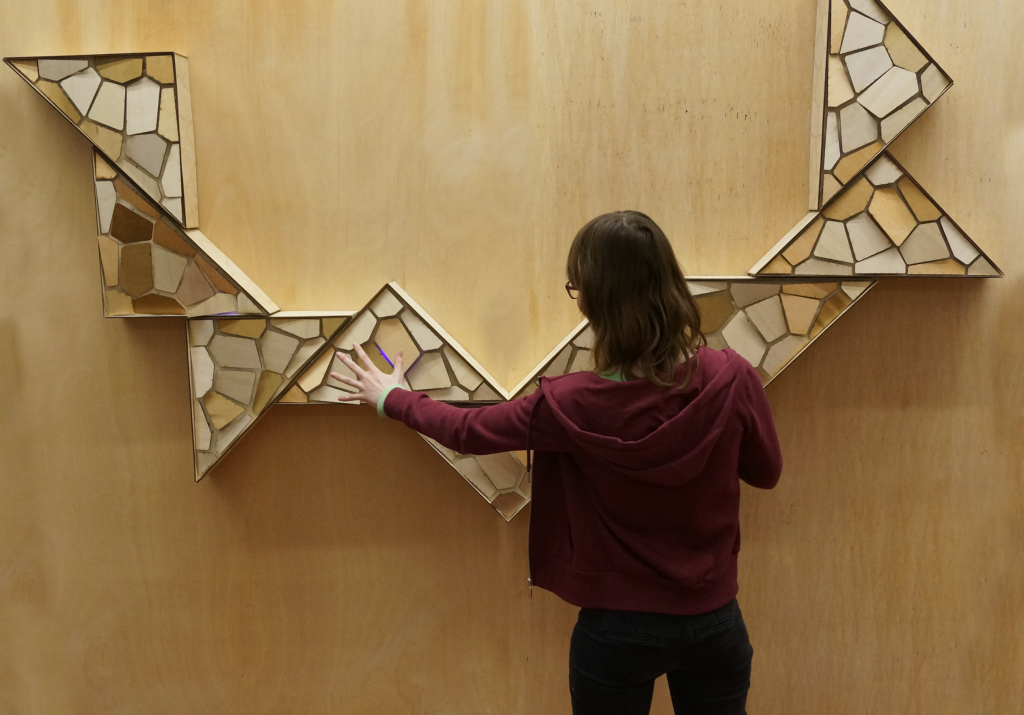
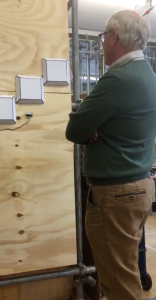
USER TESTING
In order to reach our goal of removing creative blocks and temporarily de-stressing students, we performed some user tests. Our initial user tests (as shown in the image) provided valuable conclusions. We realized that lights were not enough stimulation to distract users. As such, we aimed to integrate both motion and sound into Voronoi on top of the light interaction.
Another insight we gained is that the interaction should be clear and easy to understand. Initially, we used distance sensors that we thought would be intuitive. However, testing showed that users tried to interact by waving their hands, rather than walking with their bodies. We also realized that the placement of our sensors was not optimized. To combat these problems, we altered the interaction so Voronoi is triggered earlier, and that the placement of the sensors makes more sense.
More comical conclusions, included experts unintentionally removing the power source as they thought it was part of the interaction. We learned very quickly to conceal anything we did not want to be interacted with!
FORM
Our inspiration was drawn from natural elements. It seemed instinctive to borrow a name from nature too. The Voronoi diagram is found all around the natural world; in the veining on leaves, the spots of a giraffe, the scales of a lizard and on the shell of a turtle, to name a few. Nature informed a large section of our design process, as research shows that nature has a boosting effect on people- something we wanted to achieve. The natural element is further emphasized with the variations in wood tones and textures, as nature is never the exact same.
Voronoi is created with modular triangles in order to customize each installation to fit its designated area. By playing with the alignment and rotation, it is possible to create a configuration that is playful and inviting.

INTERACTION
Voronoi uses IR distance sensors (one per module) to detect movement. Our sensors have small eyes to distinguish movement within 1.5 meters of Voronoi. Therefore, Voronoi will be triggered when students walk past the installation and the different behaviors will be experienced.
The different behaviors are dependant on many factors; time of day, weather, amount of user interaction, and the proximity of the user to Voronoi itself. The variations and variety of behaviors keep Voronoi intriguing as every time a user passes, the new behavior is waiting to be discovered.
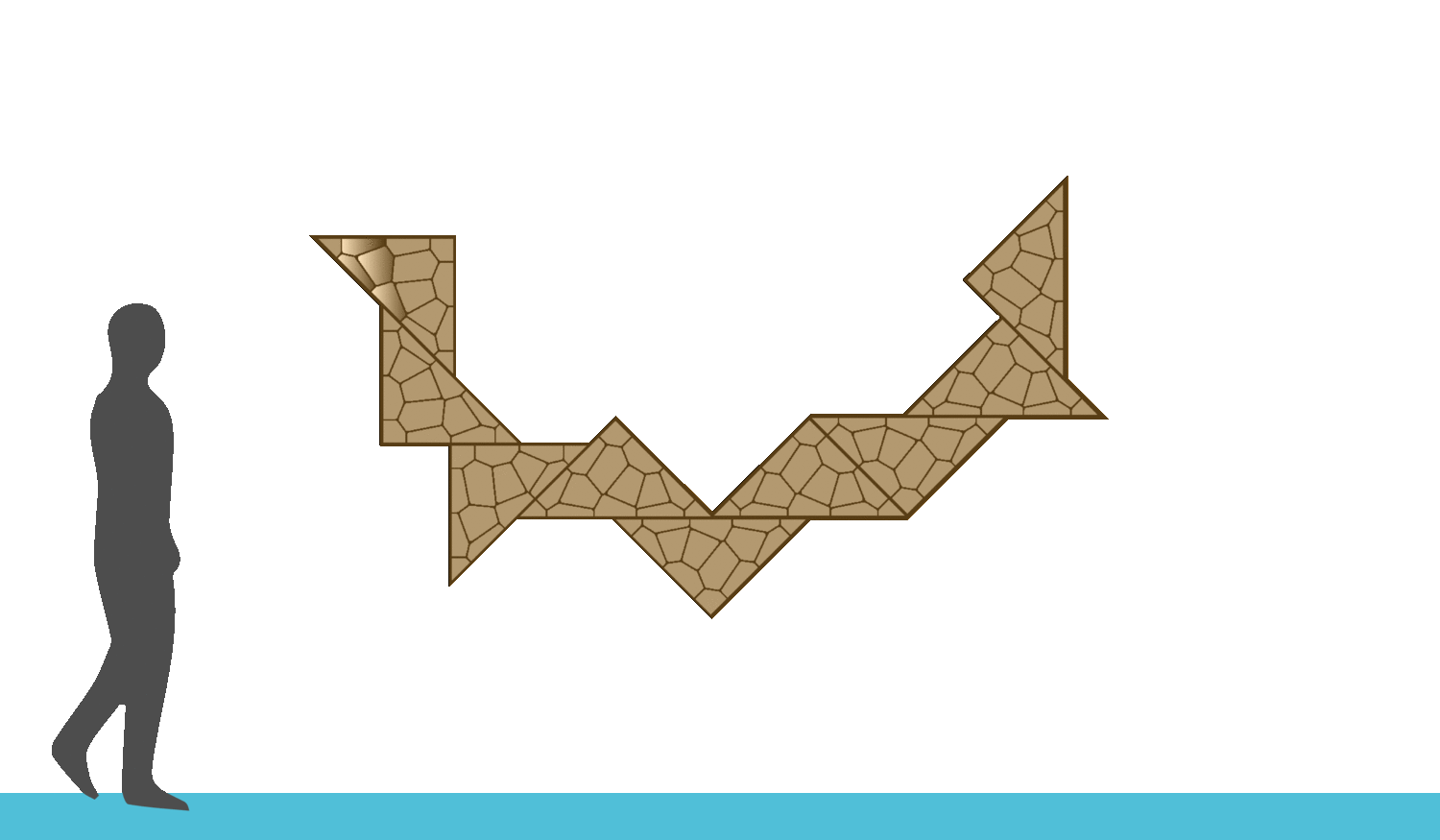
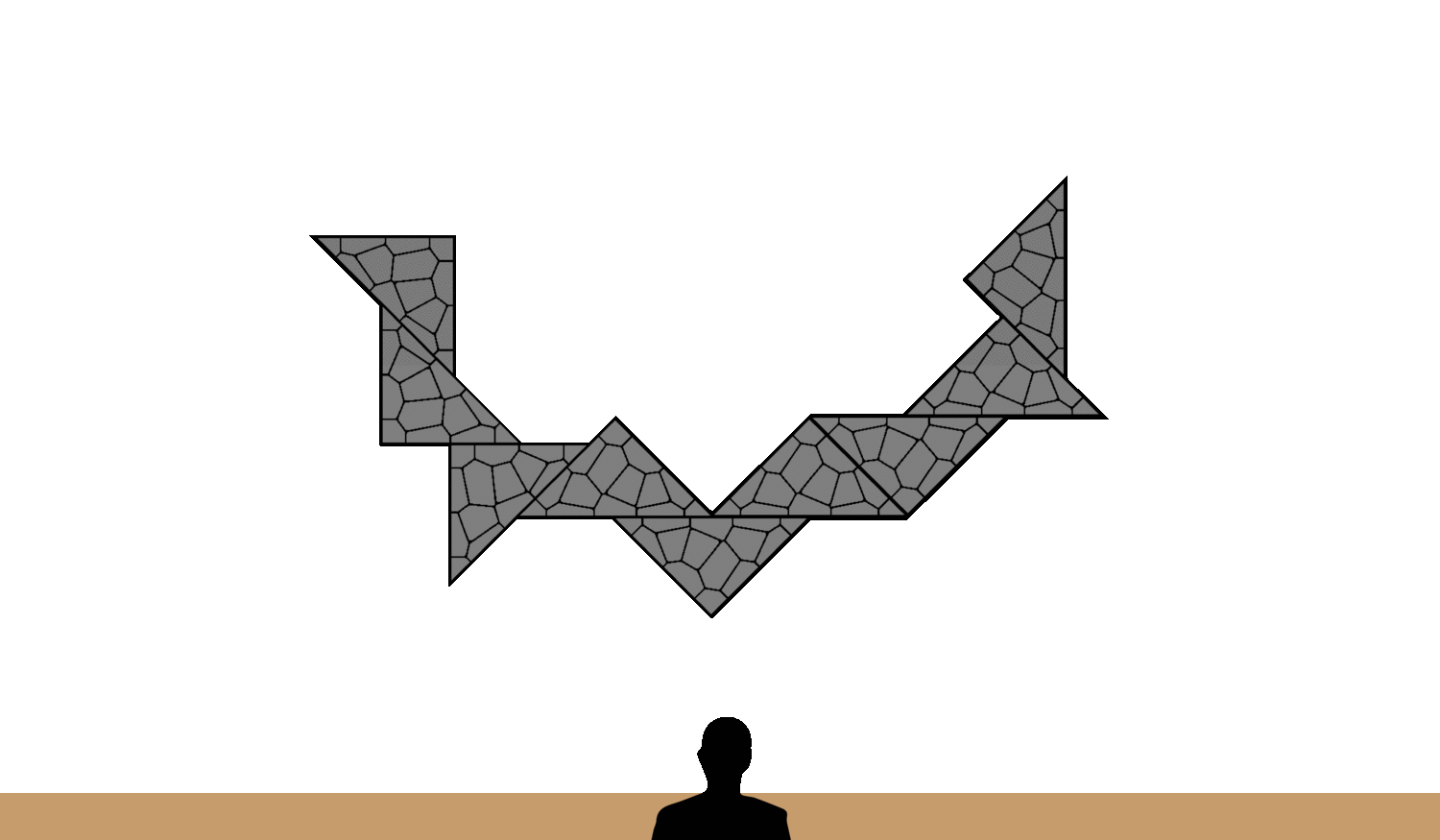
MECHANISM
Although the moving panels of Voronoi seem quite magical, they do not work on magic. The panels are attached to the installation by pieces of foam. The foam serves as a joint that ensures the motion is nice and smooth. In addition, each panel has two pieces of fishing wire attached to the back of it. These wires run through small laser cut holes in the modules and are pulled in turn by small motors called servos. As you can see in the picture three servos are used to move all the panels in one triangular module with a range of 180°.
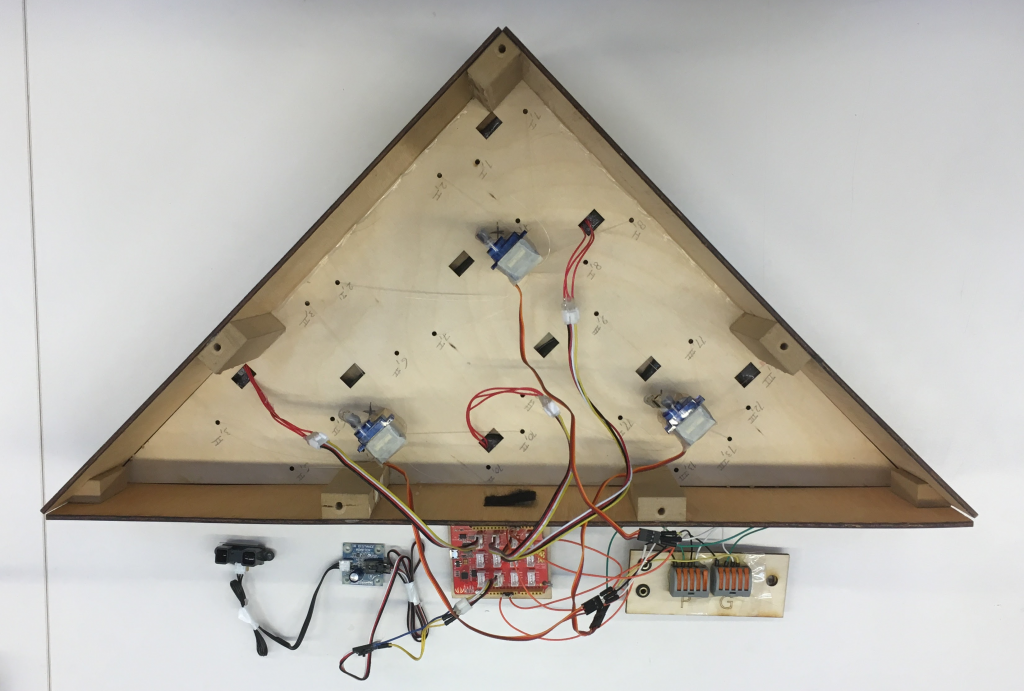
MASS PRODUCTION
For TU Delft’s 175th anniversary and the exhibition “OutsIDE Insights”, our team aimed to make two installations to simulate the scattered nature of Voronoi. Each installation had nine modules in different configurations. Once we perfected the manufacture of one module (consisting of 14 tiles, two backplates, three side panels, 14 foam bits, 24 pieces of fishing wire, 3 servos, 12 LED strips, an Arduino and countless wires), we started the mass manufacturing process to complete all 18 modules.
As you can see in the image, our workplace piled up! A manual was created in order to streamline the process and ensure that all our team members were productive. Tasks included tying dozens of knots to attach the fishing wire, soldering wires between the LED-pixels and gluing a variety of items together (from servos to wire connections, to the modules themselves). Although our mass production worked in the end, it was not without risk. Better double check the length of the fishing wire before you start tying 400 knots, only to find out they are too short…!
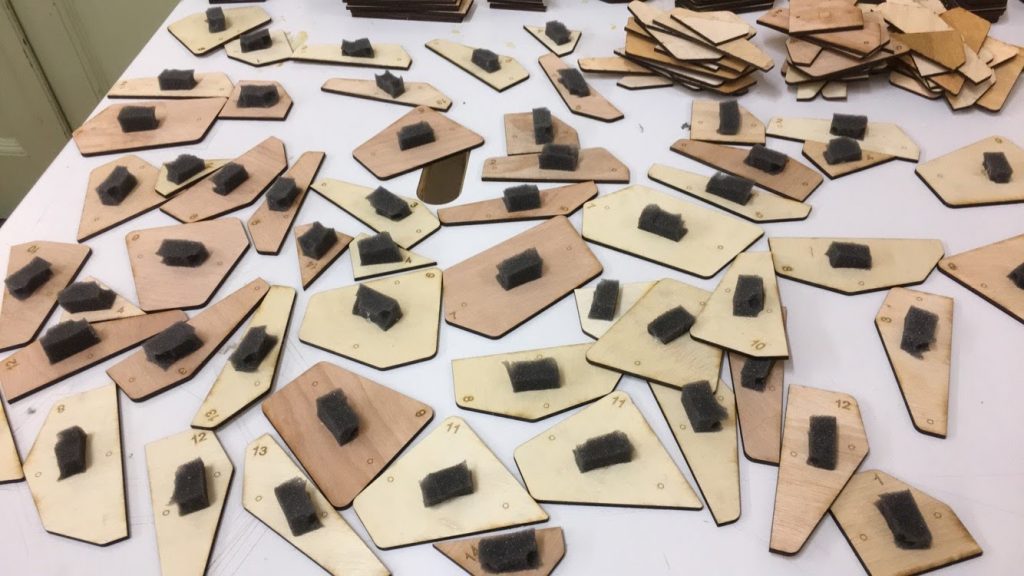
PROGRAMMING
Voronoi’s interactions are all created through an Arduino that is connected to the servos, lights, and sensors. An Arduino is a microcontroller that receives signals from the distance sensors and sends it to the servos and LEDs to move or light up respectively. However, the Arduino needs a program to tell it exactly what to do and when. Our main programmers, Felix, and Oliver (pictured) wrote the program for Voronoi varying behaviors.
The biggest programming challenge was to have the Arduino in the different triangular modules of Voronoi communicate – an important feature for the more complicated behaviors. For these intricate behaviors the modules need to anticipate whether a user is interacting, and therefore must know what its neighbours are seeing and doing. The challenge is to ensure that the Arduinos are talking effectively and putting the received information into practice.
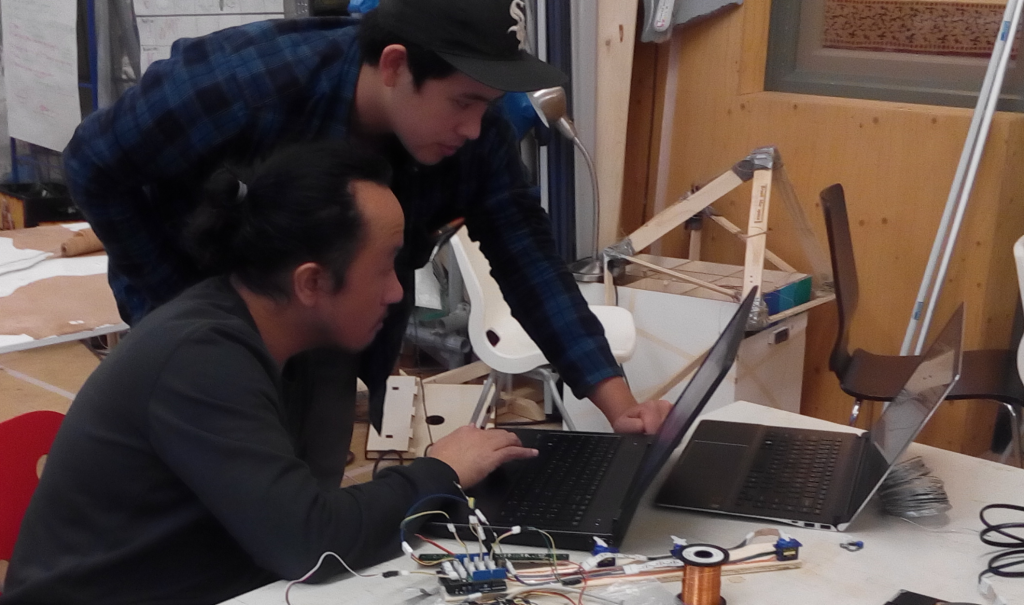
EXHIBITION
The “OutsIDE Insights” exhibition is showcasing at the Industrial Design Engineering Faculty at the TU Delft campus, and is celebrating TU’s 175th year! Set up began on the Friday before the exhibition. Voronoi was dismantled at the Science Centre, where it was designed and built, before its relocation.
Voronoi shares a carpet with three other projects that together create an Interactive Environment for the new Pulse Building. These projects are Crecol the interactive table that acts as a mediator, Ceruna the smart solar energy socket that creates awareness and Miura the interactive origami partition wall that organizes space. Together these installations represent a slice of what the Pulse building could be like.
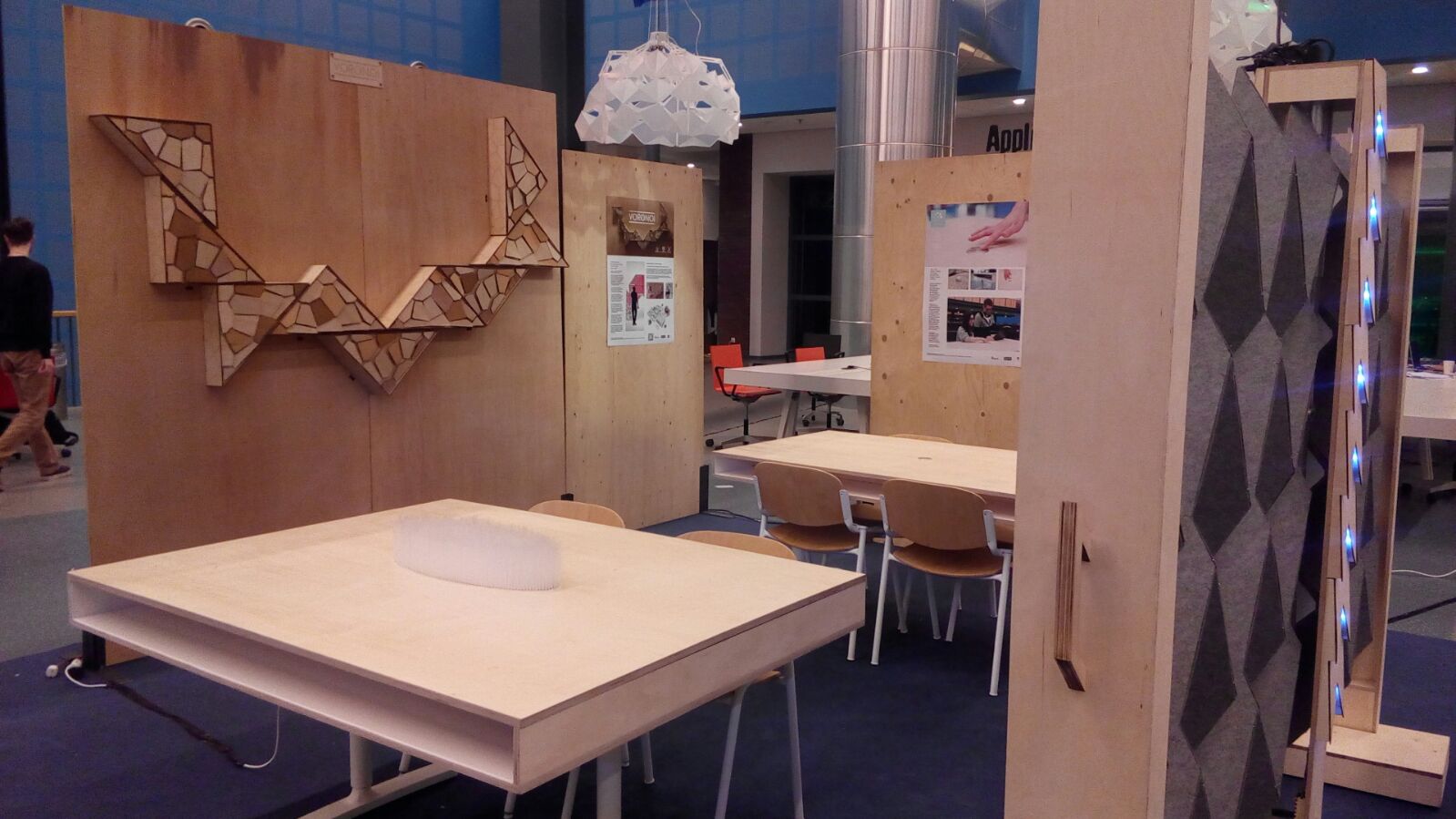
THE VORONOI TEAM
The Voronoi design team consists of seven students from different disciplines and countries. We borrowed knowledge from psychology, computer science, aerospace and mechanical engineering, and industrial designers in order to culminate a holistic design solution to taking a break.
Our multidisciplinary team taught us more than the importance of being an expert in your own field. To work as a team, you need to understand the other members and recognize how they prioritize tasks or why they complete them in a certain way. It is important to learn from your teammates to gain basic knowledge about new subjects and broaden your views through the lens of a new discipline.
Furthermore, we also learnt that it is important to pay close attention to the learning objectives of your team members. What do they want to learn? How can you teach them something new? Because if you give them the opportunity to learn, you will soon discover that motivation can be even more important than skill.

Matthijs Jansen, Oliver Damian, Daniël van den Broek, Felix Kwa, Maaike de Wit, Samantha Hurwitz, Irene van der Blij.
